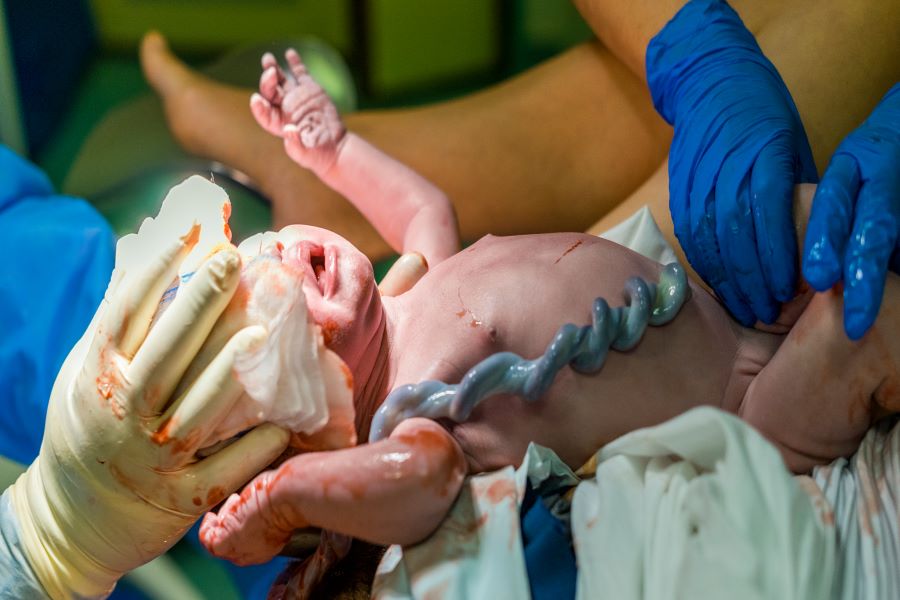Conditions That Can be Treated With Cord Blood Stem Cells


At some point, many pregnant parents-to-be will hear about the potential benefits of banking cord blood. This service is offered through public cord blood banks, where parents can donate cord blood anonymously for general use, or they can bank their baby’s cord blood in a private cord blood bank, which will save their infant’s cord blood until a time it might be needed later.
The process of cord blood banking involves saving the blood left in the umbilical cord immediately after your baby is born. This blood is a great source of powerful fetal stem cells, or immature cells that can later differentiate into many other types of cells.
Stem cells from cord blood can be used to treat a number of conditions, with the hope that we will discover new uses for them as time goes on. It’s important to note there are two different types of cord blood stem cells: donor cells (known as allogeneic), which usually come from public cord blood banks but can also come from family members, and a person’s own cells (known as autologous), which were saved at birth and stored in a private cord blood bank.
While both types of cord blood banks offer fetal stem cells, there are some important differences. Donor cells are better used for the most common genetic diseases. These donor cells can come from a public cord bank or from a sibling whose cord blood was banked at birth. It’s not a good idea to use the baby’s own cells because these cells would be affected by the same genetic condition doctors are trying to treat.
Conditions currently treated with cord blood cells include:
Leukemia and lymphoma. Fetal stem cells can be used to treat both of these types of cancer. According to the Leukemia and Lymphoma Society, most transplant doctors prefer to use donor stem cells to treat a patient’s leukemia. Studies have shown that transplanted stem cells can help the body start making healthy blood and immune system cells. Donated cord blood stem cells also have the advantage of being easier to locate when compared to bone marrow or blood donors.
Anemia. Anemia occurs when the body doesn’t get enough oxygen from the blood supply, usually through a lack of viable red blood cells. Cord blood, either from a public donor bank or from a person’s own stored cord blood, can be used to treat a form of anemia known as aplastic anemia. Donor cord blood stem cells are also used to treat several other forms of anemia.
Sickle cell disease and thalassemia. Sometimes called sickle cell anemia, this condition is characterized by misshapen red blood cells that can’t carry adequate oxygen. Thalassemia is an inherited condition characterized by abnormal hemoglobin, or the protein that carries oxygen on red blood cells. Both can result in serious health problems. Cord blood stem cells can be used to possibly cure both conditions.
Syndromes. Research is ongoing into use cord blood stem cells to treat a number of inherited metabolic disorders, including Hurler Syndrome, Scheie Syndrome, Hunter Syndrome, and many others.
In addition to these conditions, researchers are currently studying blood stem cells in treating a number of serious medical conditions, including Lou Gehrig’s disease (amyotrophic lateral sclerosis), Crohn’s disease and other inflammatory bowel diseases, diabetes, lupus, multiple sclerosis, and other autoimmune conditions.
While this is an impressive list of diseases and there is tremendous interest from doctors and scientists in cord blood stem cell transplantation, it’s important to note that many of these studies are very preliminary and may or may not yield positive results. This is part of the reason the American College of Obstetricians and Gynecologists does not recommend the routine banking of cord blood as a “biological insurance.” The American Academy of Pediatrics also does not recommend private cord blood banking, unless a sibling has a condition that can be treated with fetal stem cells.
Sources:
- Al Jefri AH
- Advances in allogeneic stem cell transplantation for hemoglobinopathies
- Hemoglobin
- 2011;35(5-6):469-75.
Cord Blood Stem Cell Transplantation - The Leukemia & Lymphoma Society.
Rosenthal J, Woolfrey AE, Pawlowska A, Thomas SH, Appelbaum F, Forman S - Hematopoietic cell transplantation with autologous cord blood in patients with severe aplastic anemia: an opportunity to revisit the controversy regarding cord blood banking for private use
- Pediatr Blood Cancer
- 2011 Jul 1;56(7):1009-12.
The American College of Obstetricians and Gynecologists - Committee Opinion #648: Umbilical cord blood banking
- December 2015.
Powered by Bundoo®










































